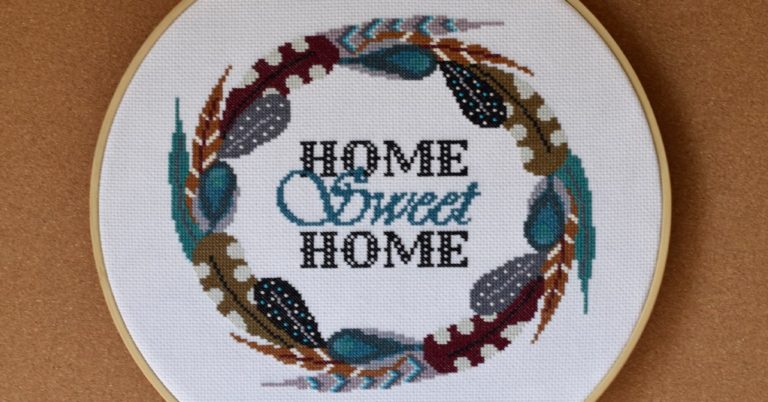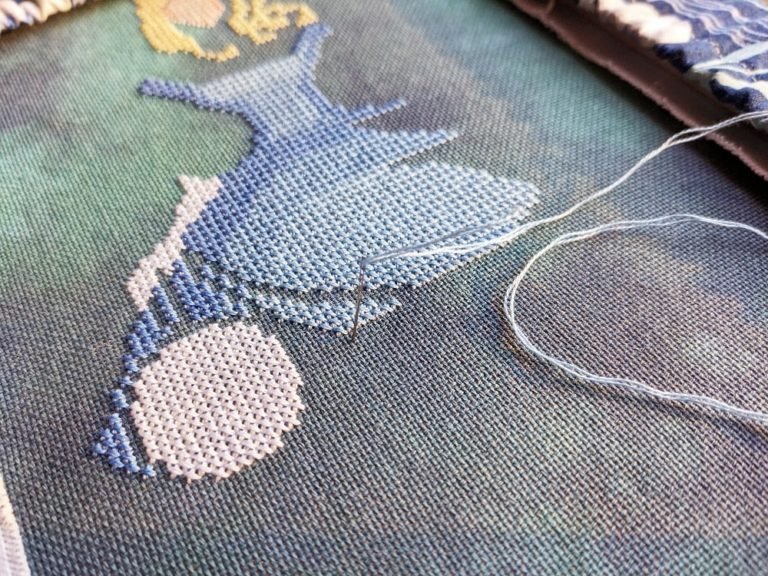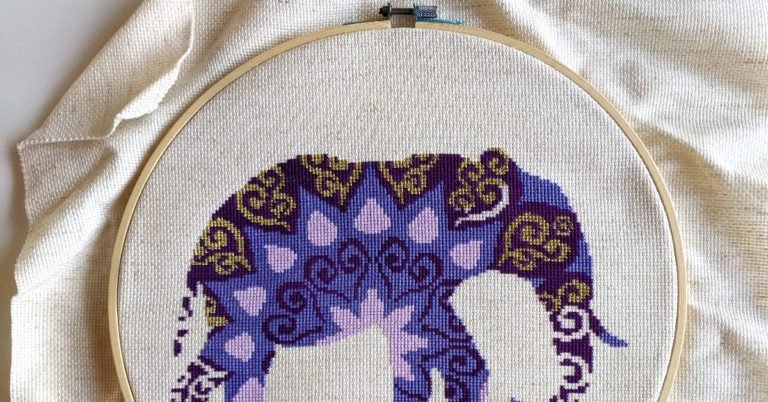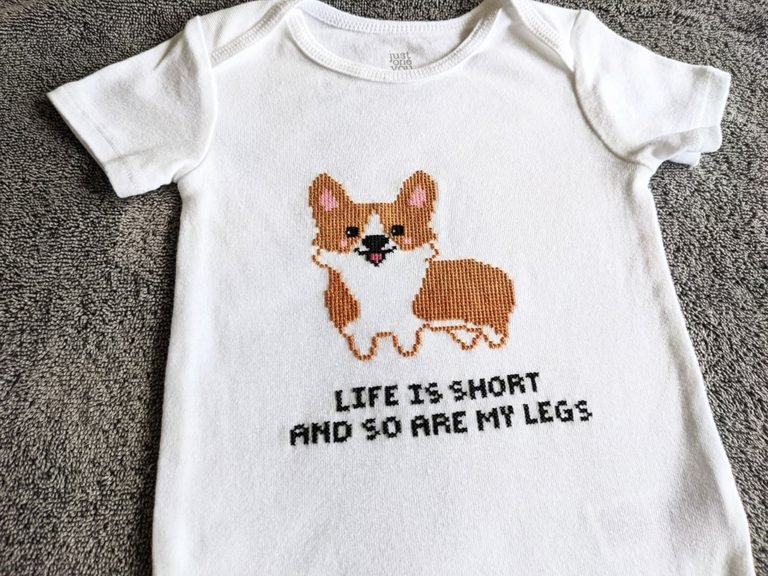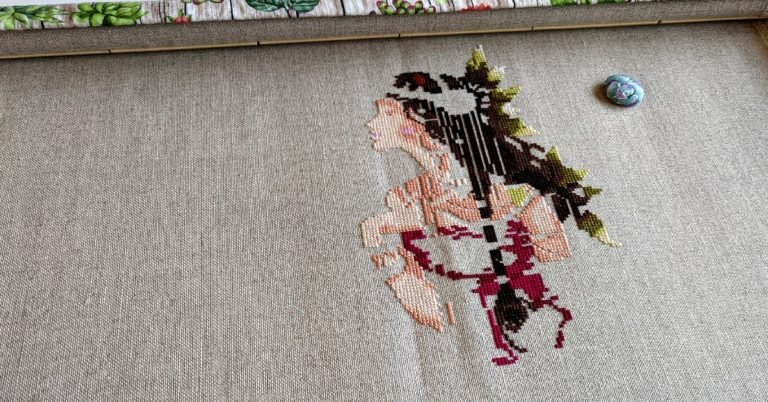Why is the Back of Cross Stitch Important?
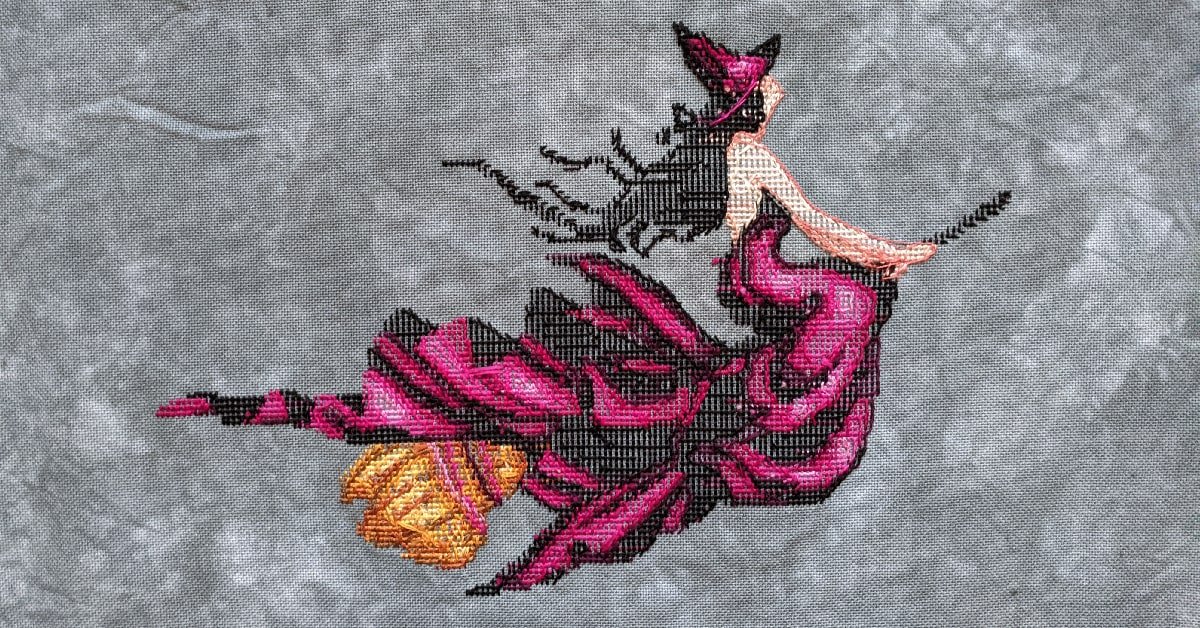
The back of your cross stitch is a slightly controversial topic among stitchers. Some stitchers say that the back of your piece doesn’t matter and that you shouldn’t worry about it. Others will say that the back should be as neat as the front.
So who’s right?
When I first started cross stitching I didn’t care what the back of my piece looked like. I didn’t pay any mind to the knots that were forming on the back of my fabric. The back looked like an absolute rat’s nest.
To be honest, I’m not really sure how it even got that way. I suppose it was just carelessness and my inexperience.
After all, who cares? It’s just the back, right?
The longer I’ve stitched, the more I’ve come to realize just how important it is to keep a neat back.
Although the back of your project isn’t the main focus, it should be well kept. Having a messy back can cause more noticeable problems if not kept in check and cause you frustration. This will reflect on the front of your work.
Chances are if the back isn’t neat neither is the front.
WANT FREE CROSS STITCH PATTERNS?
Sign up for my newsletter to get access.

Knots May Seem Harmless but They Aren’t
Knots are the worst. Usually, I end up with at least one knot that I didn’t notice had formed. Even if I have moved on from that spot I always untie the knot! This can be a little time-consuming, but worth it. It’s necessary to remove the knot so that your threads lay flat.
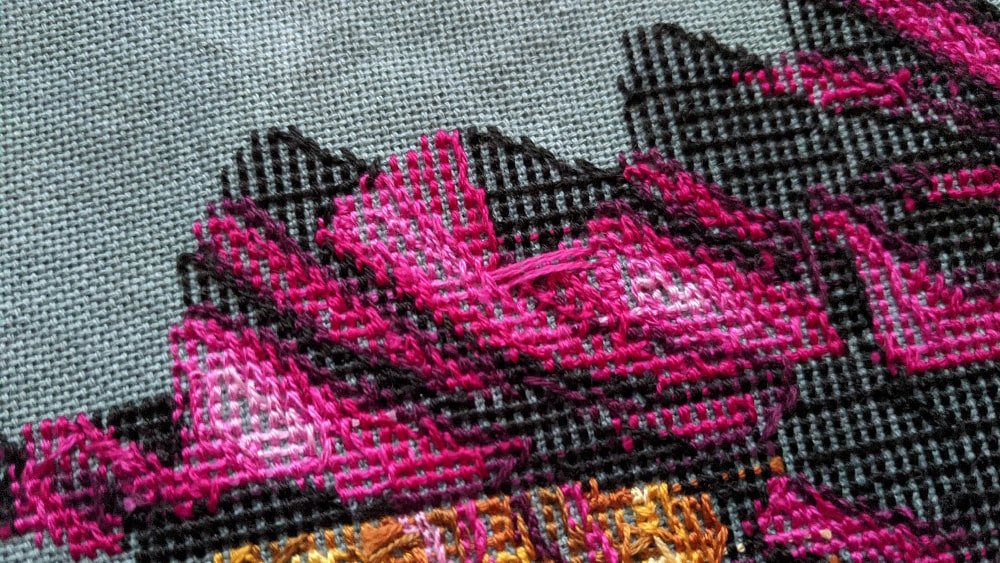
Once you untie the knot, you will need to anchor it so that your stitches don’t become loose. I pull the loop under some of the surrounding stitches so that my x’s look perfect on the front.
Anchoring your extra thread will also prevent you from stitching through it and creating more of a mess.
Try to be mindful of the back of your work and check it every so often to make sure that no knots have formed. You can somewhat tell if you have a knot by the way the thread pulls through the fabric. It will have some give. This will come with experience.
I’ve noticed that I’ve had fewer knots when stitching with DMC. The texture of their floss is smooth and also silky.
If your thread is knotting constantly, your thread may have gotten twisted while stitching. Let the needle and thread hang from your project for a minute. It should untwist itself.
Cheap threads are more likely to knot, especially if they have a rough texture. You can use a thread conditioner to prevent knots from happening as frequently.
Uneven framing, Lumpiness
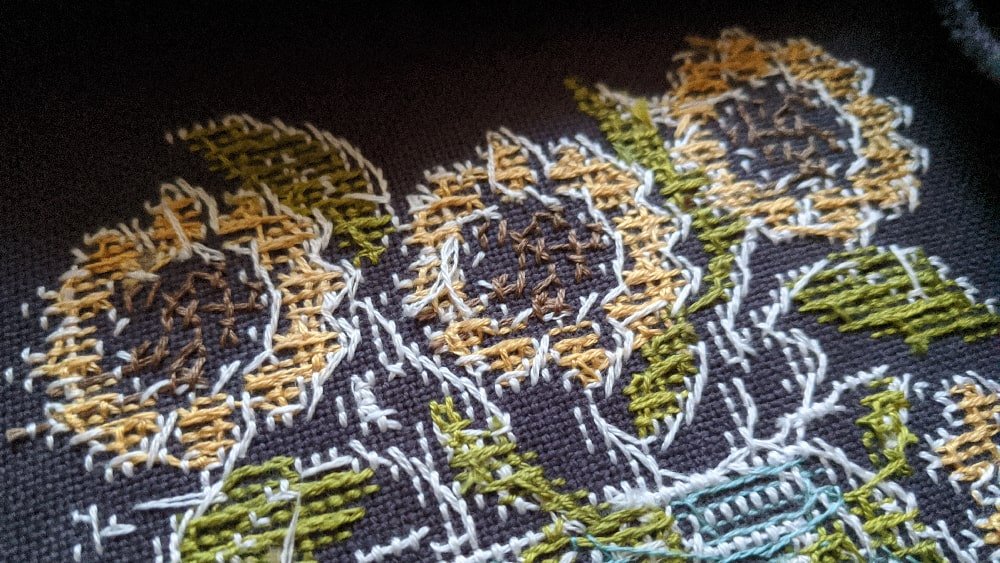
You or your framer might have a hard time framing your project.
It will be extremely difficult trying to frame something that has a lot of knots. The bumpiness can give your finished piece an unprofessional look and give it a warped effect. Unfortunately, there’s not much that can be done when the back of the cross stitch is uneven.
If you are framing a piece yourself, the extra thread can cause your project to not fit in a frame or finishing.
It’s better to prevent the lumps from happening. Again, if you notice knots starting to form, take them out immediately. Don’t wait until the back gets unmanageable.
Traveling Threads
Traveling threads are threads that are carried from one spot to another, usually across long distances. Some stitchers cut threads that are more than 3 stitches away. This will vary based on your project.
Usually, if it takes more floss to cut and start in another space, I will just carry my thread unless it can be seen on the front.
If you are using dark thread on a light background, it is not a good idea to carry your floss. You will be able to see it through the holes of the fabric. Instead, you can try starting and ending with a pin stitch.
Pin stitches are perfect for lonely, single stitches on your fabric. They start and end at the stitch so there’s no need to carry thread.
Neat Backs Equal Using Less Thread

If your stitches are tidy, you will save money. There won’t be a wad of wasted floss on the back of your project.
With thread getting more and more expensive, it is so important to converse your floss. If you’ve been stitching for a long time, you can usually tell how far a length of thread will get you.
No more losing thread chicken! Thread chicken is when you try to finish your stitching before the thread runs out.
It Can Become Frustrating to Work on Your Project
When I was younger and more inexperienced, the backs of my projects were a mess. I’m not even sure how they got that bad.
Nothing was more frustrating than no longer being able to work on my project.
The thread in the back would be so thick that I couldn’t push the needle through. Not only that but if I somehow managed to poke the needle through, it would split the stitches.
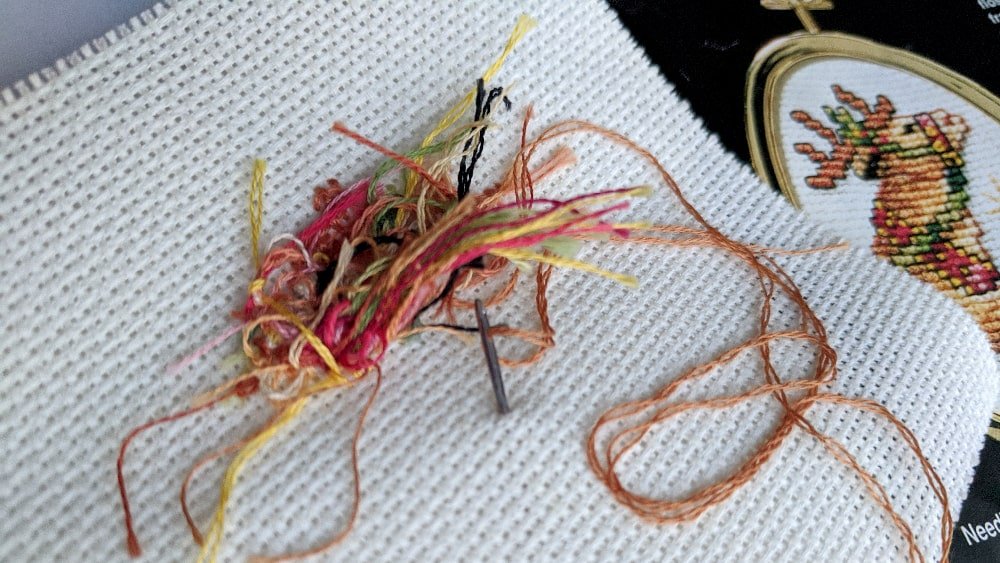
If you want your stitching to appear neat and even on the front, it helps to have neat stitching on the back.
Entering Finished Pieces in a Competition
Nobody is going to be looking at the back…unless you are entering your work into a competition.
If you don’t care about the back, you probably won’t be entering your projects in any contests.
The guidelines for competitions will vary depending on where you live. However, you will be judged on the neatness of the back of your project. Check with the specific competition for rules and regulations.
Do you want that blue ribbon? Keep your back looking as good as the front!
Final Thoughts
The back of your stitching won’t always be perfect, but it’s a good practice to get them as close to perfect as you can.
That’s not to say that you need to obsess over what the back of your project looks like. If you have some carried threads or knots in the back, it probably won’t matter.
You just don’t want it looking like a rat’s nest otherwise there might be some problems down the line.
If you do come across a knot, fix it.
As long as you’re having fun and enjoying the hobby, who cares? You do you.
Happy Stitching!



